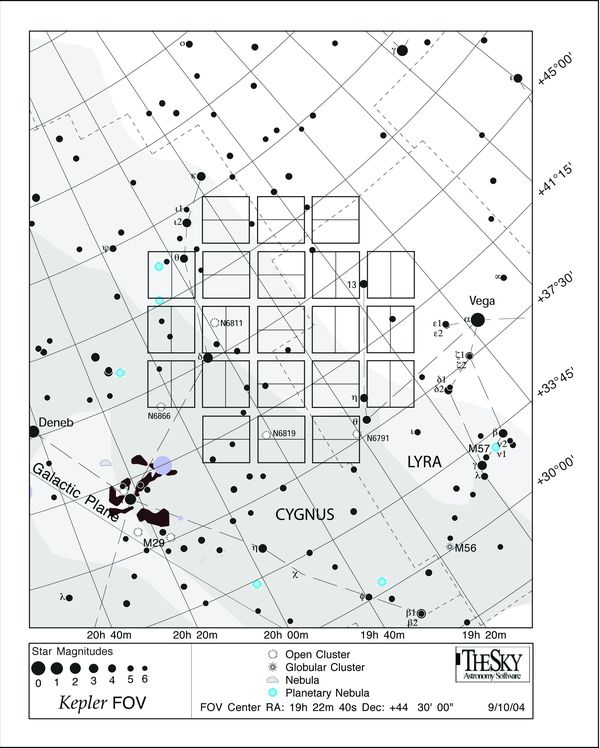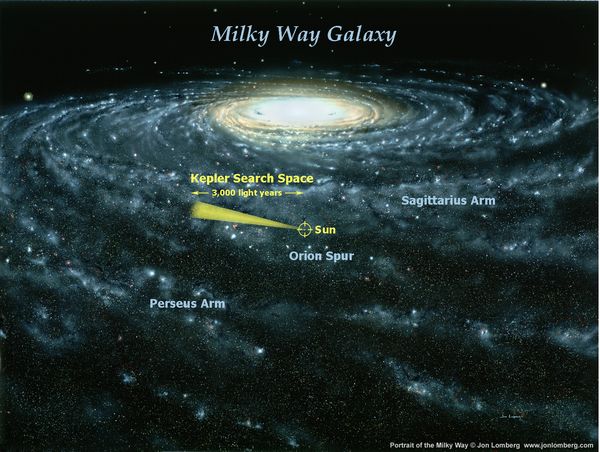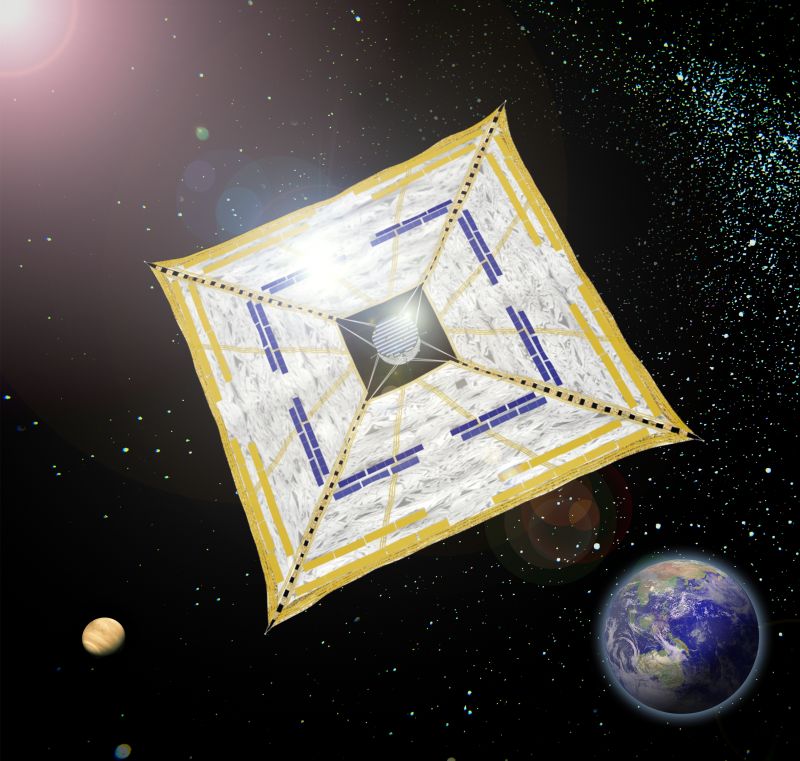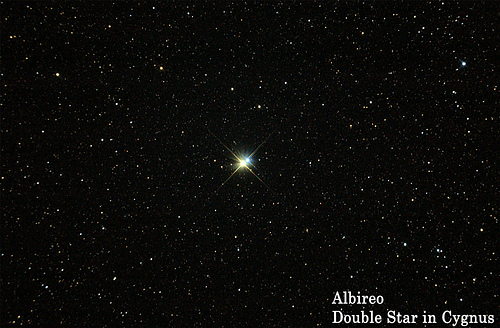Archive for 2010
 Summer Solstice Sunset – 2010
Summer Solstice Sunset – 2010
- When: Monday, June 21, 2010 at 9:11pm (so come at 8:30pm)
- Where: Solstice Park (or, if you’re not in Seattle, wherever you have a view of the western horizon!)
- Who: Everyone welcome, as usual.
Come watch the summer solstice sunset at Solstice Park in West Seattle on Monday. We’ll see if the sunset lines up with the placed marker. I’ll be there even if it is cloudy because sometimes the Sun peeks through just as it begins to set, but if it is driving rain I’m staying home with a cup of tea.
If it is clear we’ll bring a telescope or two to take a look at the Moon after the Sun goes down – and Mars and Saturn if we stay until it is dark enough. We will not be able to see the comet – that rises a little before 3am, and I plan to get some sleep before Tuesday. You’re welcome to look for the comet on your own though!
If you’re interested – here’s the timing of various celestial events on Saturday from Seattle, courtesy of the U.S. Naval Observatory Astronomical Applications Department:
Sun and Moon Data for One Day
The following information is provided for Seattle, King County, Washington (longitude W122.3, latitude N47.6):
Monday 21 June 2010 Pacific Daylight Time
SUN
Begin civil twilight 4:31 a.m.
Sunrise 5:11 a.m.
Sun transit 1:11 p.m.
Sunset 9:11 p.m.
End civil twilight 9:52 p.m.MOON
Moonrise 3:29 p.m. on preceding day
Moonset 1:36 a.m.
Moonrise 4:45 p.m.
Moon transit 9:29 p.m.
Moonset 2:05 a.m. on following day
This event is my part of the NASA’s Solar System Ambassadors program, and thanks to West Seattle Blog for publicizing the last few!
Everyone is welcome, see you there!
![]()
~ A l i c e !
 Kepler Mission: Basic Background
Kepler Mission: Basic Background
Opening soon at the Willard Smith Planetarium will be Strange Planets, a show about how we detect planets around other stars. To whet your appetite – how about a few details about the Kepler Mission.
In short – the Kepler Mission is a telescope in orbit that is pointed at the exact same patch of sky for a period of four years (starting in 2009). It is detecting planets around other stars via the so-called transit method – watching as planets transit in front of their stars. By watching for five years it should be able to detect hundreds (if not thousands) of planets in Earth-like orbits, and therefore plenty of planets in their stars habitable zones.
Where is Kepler Looking?
Kepler is closely watching a little patch of sky by the constellation Cygnus, pointed along our little section of the Milky Way, carefully avoiding all the brightest stars.
The Kepler Technology
Advanced gyroscopes onboard Kepler keep it pointed in exactly the same direction so the scientists at JPL can get unwavering readings on each star in Kepler’s field of view. To detect planets and calculate their orbits with certainty Kepler will have to watch each planet transit two or three times at least. For a planet like Earth, in its star’s habitable zone, the orbit takes about a year. Different sizes and temperatures of stars have habitable zones at different distances, but the Kepler mission will be able to do a good job at detecting planets with orbital periods up to about two years.
New News: Hundreds of Planet Candidates Found
Characteristics of Kepler Planetary Candidates Based on the First Data Set: The Majority are Found to be Neptune-Size and Smaller
Authors: William J. Borucki, for the Kepler Team(Submitted on 14 Jun 2010)Abstract: In the spring of 2009 the Kepler Mission conducted high precision photometry on nearly 156,000 stars to detect the frequency and characteristics of small exoplanets. On 15 June 2010 the Kepler Mission released data on all but 400 of the ~156,000 planetary target stars to the public. At the time of this publication, 706 targets from this first data set have viable exoplanet candidates with sizes as small as that of the Earth to larger than that of Jupiter. Here we give the identity and characteristics of 306 of the 706 targets. The released targets include 5 candidate multi-planet systems. Data for the remaining 400 targets with planetary candidates will be released in February 2011. The Kepler results based on the candidates in the released list imply that most candidate planets have radii less than half that of Jupiter.
Comments: Paper to accompany Kepler’s June 15, 2010 data release; to be submitted to Astrophysical Journal Subjects: Earth and Planetary Astrophysics (astro-ph.EP) Cite as: arXiv:1006.2799v1 (added 6/15/2010 3pm)
Want More?
Kepler’s Website (Official Honoree of the Webby Awards!)
The Extrasolar Planets Encyclopaedia – a good resource for the latest exoplanet totals and discoveries.
~ A l i c e !
arXiv:1006.2799v1 [astro-ph.EP]
 Comet McNaught
Comet McNaught
I just got this in my e-mail. I can’t tell if this is a new “Comet McNaught” or a new approach by the same one we saw a couple years ago. This is a different comet than the “Comet McNaught” discovered a few years ago, but it was discovered by the same person! In any case – enjoy!
Space Weather News for June 8, 2010
http://spaceweather.comNEW COMET McNAUGHT: A fresh comet is swinging through the inner solar system, and it is brightening rapidly as it approaches Earth for a 100 million mile close encounter in mid-June. Comet McNaught (C/2009 R1) has a vivid green head and a long wispy tail that look great through small telescopes. By the end of the month it could be visible to the naked eye perhaps as bright as the stars of the Big Dipper. Because this is the comet’s first visit to the inner solar system, predictions of future brightness are necessarily uncertain; amateur astronomers should be alert for the unexpected. Visit http://spaceweather.com for sky maps, photos and more information.
You are subscribed to the Space Weather mailing list, a free service of Spaceweather.com.
New subscribers may sign up for free space weather alerts at http://spaceweather.com/services/ .
![]()
~ A l i c e !
 IKAROS – Japan’s Solar Sail
IKAROS – Japan’s Solar Sail
What you need to know: Japan is launching two satellites on May 18th, 2010, one towards Venus and the other, IKAROS, to demonstrate the tranquil and romanticized method of interplanetary travel: the solar sail. A solar sail is unpowered, the spacecraft pushed by the force of the solar radiation. A solar power sail combines thin solar panels with the sail for on board power.
Edit 5/17 5pm PST: Launch scrubbed due to weather. The window is open until June 3, other wise Junya Terazono suggests that it may be launched in May 2011. No official word on any of that yet though.
Emily on Twitter
Edit 5/17 11:45pm PST: Launch rescheduled to May 21 6:58 (Japan time).
The JAXA/Akatsuki Twitter account (you might need THIS)
Edit 5/22 IKAROS launched successfully and powered up!
Solar Sails
Sounds like science fiction, but a solar sail is pushed by the photons from the Sun. That’s right, you’re using sunlight to sail, not the solar wind. The Planetary Society has a full explanation, but when a photon is reflected it exerts a small force on the surface reflecting it. The Sun certainly generates a lot of photons, so if you have a large, lightweight, reflective surface, it will be pushed by the force of many photons being reflected off it. Just like a sailboat, the larger your sail the more wind (or in this case reflected photons) you can catch.
And therein lies the problem. Photons are very small. Very, very small. Imagine an regular ant trying to push a semi-truck. Not gonna work – though in a perfect situation there would be some small effect. How many ants do you think you would need? Would all those ants be able to push on the truck or would there be too many of them? A solar sail needs to be huge, and extremely lightweight.
IKAROS
JAXA and The Planetary Society are both done with solar sails being relegated to science fiction just because of the technical challenges. JAXA’s decided to combine a solar sail with solar in order to demonstrate some of the possibilities awaiting us. Their “sail” is covered in solar panels, so in addition to being pushed by the light from the Sun they’ll be generating power. The main mission objectives: prove that a spacecraft can be propelled by a solar sail, and prove that the thin solar panel membranes they’ve chosen do generate power.
Ikaros will unfurl its sail by spinning. You can see this in their video, the spinning starts around 06:50. The video is in Japanese, but you don’t need to understand what they’re saying to want an umbrella that works this way!
Daedalus and Icarus
Daedalus was imprisoned in a tower with his son Icarus, so he built a pair of wings for each of them. The feathers were fastened to the frame with wax, so Daedalus warned his son not to fly too close to the Sun. Of course, being a young boy Icarus ignored his father. He flew so high the wax melted, the wings broke, and he tumbled to his death in the raging sea below. Daedalus escaped successfully and lived safely for a while after that.
That’s the myth as I’ve heard it – I think I’d prefer to name my test mission after Daedalus.
Questions I had after reading about IKAROS:
- Does IKAROS have an ion engine? No, that’s an application of combining solar sails with other propulsion that JAXA’s website proposes.
- Is IKAROS going to Venus? Well, it’ll be on a trajectory towards Venus, but it won’t be able to do orbit insertion so it will just do a far-away fly-by.
Want More?
IKAROS at JAXA
JAXA (the Japanese Space Agency)
The Planetary Society’s Light Sail
![]()
~ A l i c e !
 Carnival of Space #153
Carnival of Space #153
Stuart Atkinson is hosting this week’s Carnival of Space over at Cumbrian Sky. He’s got some very flattering things to say about my Iapetus story (don’t believe everything you hear from him about me, he’s entirely too generous!)
Oh, and don’t forget your blue/red 3-D glasses …
![]()
~ A l i c e !
 Stargazing
Stargazing
Let me quite briefly draw your attention to the tab in the upper left corner “Seattle Stargazing” (for those of you reading through RSS, the link will take you to the same place) where I recommend good locations near and in Seattle for urban and not-so-urban stargazing.
I’m getting ready to update it for 2010, but the recommended locations remain the same. If you’re clicking over here from Greg’s Seattle Astronomy Examiner article – that page probably has some places to interest you.
![]()
~ A l i c e !
 Space Missions You Really Should Know
Space Missions You Really Should Know
Which missions do you wish people wouldn’t forget about? Here are some of mine:
- Apollo 11. Humans first walked on the Moon. 2 American men: Neil Armstrong and Buzz Aldrin. Michael Collins piloted.
- Sputnik. First man-made object in orbit – a beeping satellite from the USSR.
- The Vostok Program: Yuri Gagarin – first human in space, first human to orbit the Earth. USSR.
- Mercury (specifically “Freedom 7”): Alan Shephard – first American in space.
- STS “Space Transport System” – the official name of the Space Shuttle program. Many important occurrences.
- Pioneers 10 & 11, Voyagers 1 & 2 – Our first “close” views of the other planets.
- Hubble – Hubble’s photos changed the average person’s view of astronomy, and advanced the science immensely.
- Skylab, MIR, and ISS – these are some of our space stations, we had them serially not simultaneously. ISS is the only one now.
- SpaceShip One: Burt Rutan flew the 1st commercial (non-government/non-military) flight into space on a reusable craft.
- Last but not least, keep these in your heart: X-15, Soyuz 1, Soyuz 11, Apollo 1, Challenger, Columbia.
- Just a couple inspiring names: Sally Ride, Valentina Tereshkova, John Glenn, Shenzhou
Links
- Want more?
- Disaster Details
- If that link doesn’t work – use this one. Or the source.
![]()
~ A l i c e !
 Iapetus and the Cassini Regio: 365 Days of Astronomy
Iapetus and the Cassini Regio: 365 Days of Astronomy
By now my second podcast for 365 Days of Astronomy should be live, and here is the post to support it – containing links I mentioned in the podcast. So go listen already!
In this podcast I tell a story about Iapetus and the mystery shrouding her. And yes, I mean tell a story. I was inspired by Jay O’Callahan and his fact-tales.
By the way, this is the only thing I’ve put out on the internet that I haven’t licensed under Creative Commons. (Things that aren’t mine, but are posted by me may be excepted as well. For example, NASA retains the rights to their images though they allow generous usage of them, Jason retains the rights to his photographs, and there are others). I do, in fact, hold the copyright on this story. I’ve granted 365 Days of Astronomy the rights to replay it – and you can replay it as well and use it for personal and educational purposes, but don’t claim it as your own. Let me know if you want to use it for something else, I’ll probably says yes and be flattered.
Want More?
Emily Lakdawalla about Iapetus
The Story
Once upon a time there was a moon named Iapetus. She orbited Saturn at a distance of over 3 and a half million kilometers, and there were only two larger moons of Saturn, but still all the other moons made fun of her.
They made fun of her because her front hemisphere was a lot darker than her back hemisphere. This darker area was called the Cassini Regio, but the other moons laughed at her and said she looked like a spherical Oreo. Iapetus thought this wasn’t really fair, since she wasn’t even spherical herself, more lumpy in places.
One July, the Cassini Spacecraft showed up. He noticed how the other moons wouldn’t let Iapetus play with them, and how they always made fun of her. “Come over here, Iapetus,” he said, “I have a story to tell you.”
“Me?” asked Iapetus, “You have a story to tell me?”
“Yes, but only for you, your other friends don’t get to listen to this story.”
Suddenly the play-space became silent. The other moons stopped their games, their hula-hoops fell off, the ones running on the track slowed down, and they all turned around to look at Cassini and Iapetus talking quietly as they orbited around Saturn.
“Once upon a time there was a moon named Iapetus,” started Cassini.
“No, no! We already did that part, Cassini!” protested Iapetus, “get to the good part!”
“Well,” said Cassini, “the first time anyone from Earth saw Iapetus was in 1671, and that man’s name was Cassini.”
“Hey, that’s your name too! Wait, which one is Earth, is that the third or the fourth one out from the Sun?” asked Iapetus.
“Fourth, silly!” said Titan, one of the other moons, stepping closer to Cassini. “Don’t you know anything?”
“I’m not silly!” yelled Iapetus.
“Titan, Earth is the third one. Now if you’re going to listen you both need to sit down and be quiet like Phoebe,” said Cassini gently. “Back then no one knew what mysteries awaited them on the surface of Iapetus.”
“See? I’m not silly, I’m mysterious!” said Iapetus, sticking out her tongue at Titan.
“Shh! No more interruptions.” Cassini frowned at the two of them.
“Since Voyagers 1 and 2 first glimpsed Iapetus’s interesting surface there has been much speculation by scientists all over Earth about how Iapetus came to be this way. I will tell you a few of these ideas, and then Iapetus can tell us what really happened.
“The first idea involves Phoebe. Where is Phoebe? Ah, there she is. A scientist named Hamilton proposed that micrometeors could have knocked some dark dust off Phoebe, then Iapetus could have swept up this material such that it all collected on the front hemisphere.”
“But Cassini, I’m a different color than either Iapetus’s dark side or Iapetus’s light side. I don’t think we’re related!” protested Phoebe.
“Yes, that’s a problem with this idea, as the Earth scientists found out in 1998,” said Cassini.
“What about me?” asked Hyperion, “I’m close to Iapetus too, maybe I’m part of this.”
“That was the very next idea I was going to mention, Hyperion, thank you for bringing it up. There are two different theories relating to you. The first thing though is to find out if the dust can actually get from Hyperion to Iapetus. The scientist Marchi and his colleagues think that’s pretty easy, but how do you get the dust off Hyperion in the first place?”
“Hit it with something!” chorused all the moons of Saturn, making a terrible racket and almost waking the Sun up from her mid-afternoon nap.
“I see you know the secret,” agreed Cassini. “If you need to get something from one place to another in the Solar System, you usually need to slam two things together.”
“And look,” said Hyperion, holding his arm up next to Iapetus’s dark side, “we’re basically the same color on this side of Iapetus.”
“So you are,” observed Cassini. “That makes this idea seem plausible. One last puzzling idea is that perhaps this dark material is from somewhere else, and was collected on both of you.
“One of my jobs in coming here is to take a better look at you Iapetus, and see if I can provide any useful data for the scientists to use in figuring out where your Cassini Regio came from. Do you know the answer?”
“Wow, everyone’s looking at me?” asked Iapetus, “I dunno, I can’t remember when it happened. I am pretty sure that the light side of me is ice, because my backside is always a little chilly. Anyway, if I did know where the dark stuff came from, shouldn’t I leave it as a puzzle for you to find out?” With that she ran off to play hula-hoop by herself, but Hyperion and some of the smaller moons followed her and they all started a game of Occultation.
The End
![]()
~ A l i c e !
 May-June 2010 Sky
May-June 2010 Sky
Time flies, and the sky slowly changes. Can you believe it’s May and time for the Summer Triangle already? Welp, it is! Check out the starmap and all these wonderful things to look at. For more – go to the Abrams Planetarium’s Night Sky Notes!
Notable Sky Objects
SATURN
Saturn is beautiful in the southern sky this month – in Virgo’s head. It’ll be one of the two brightest “stars” you can see in the south/southwest. Since Saturn is still mostly edge-on to us I’d recommend a small telescope to pick out the rings, whereas normally you can see them with steadied binoculars.
MARS
Mars continues to grace our skies – shining pinkly in the West after sunset and sticking around until midnight (early May) or only 9pm (late June).
JUPITER
Jupiter rises around 2 or 3 in the morning – you can find it almost due East.
MERCURY/VENUS
Mercury is pretty close to the Sun’s position, but you might be able to catch it at the end of May just before sunrise. Venus you’ll have to try for just after sunset, because it sets very soon after the Sun does.
EVENTS
June 14 – Earliest sunrise of the year.
June 21 – Summer Solstice.
June 27 – Latest sunset of the year.
New Constellations
SCORPIUS – The Scorpion
SCIENCE: Antares (alpha scorpii) red supergiant of variable brightness with a close blue-white companion orbiting every 900 years. Means “Rival of Mars” (anti-Ares) or “Like Mars”
MYTH: To the Chinese it was a dragon; in the South Pacific, it was Maui’s fishhook used to pull up islands from the ocean floor.
The Summer Triangle (well, we have most of it anyway):
Cygnus(the Swan) and Lyra (the Lyre/Harp) reappear, and the bright star from Aquila (Altair). The summer triangle (as you can tell by the name) will be directly overhead come summer, but now it’s low in the East, a harbinger of brighter days to come.
CYGNUS – The Swan
SCIENCE: Albireo – Cygnus’ head is the prettiest double star in the sky. Look through a telescope and it separates into a glowing gold star, and a tiny blue point. This is a good thing to suggest for people with telescopes at home.
MYTH: Do you like gory details? When his brother Phaethon was killed by Zeus and scattered all over the Earth, Cygnus picked up all the pieces. The gods laughed, calling him a “bobbing duck,” picking up all those pieces. Then they started to realize that maybe he was doing a good deed, so they put him in the sky as a “noble” bobbing duck – a swan.
LYRA – The Lyre
SCIENCE: M57, the Ring Nebula is between the bottom two stars in the constellation. It’s pretty hard to pick out, even with a small telescope, but it is a good target for larger scopes, and Hubble has a beautiful image of it.
DELPHINUS – The Dolphin
This tiny constellation is as cute as a bug’s ear … or a dolphin’s. Probably one of the easiest constellations to spot – Delphinus is isolated in a dark part of the sky near Aquila.
MYTH: The four stars that make Delphinus’ head are also called “Job’s Coffin.” In the United States you don’t often think of Christianity as the underrepresented religion, but in our sky it is: the sky is dominated by the Greek names and stories.
“Tiny” Guys
Going for the Gold? Here’re this month’s itty-bittys.
LYRA – The Lyre
CORVUS – The Crow
CRATER – The Cup
COMA BERENICES – Berenice’s Hair
LYNX – The Lynx
SEXTANS – The Sextant
HYDRA – The Sea Serpent (Big and dim)
LACERTA – The Lizard
LEO MINOR – The Small Lion (Between the Big Dipper and Leo)
VULPECULA – The Fox
SAGGITA – The Arrow
SCUTUM – The Shield
LIBRA – The Scales
CAMELOPARDALIS– The Giraffe
Returning Constellations
BOÖTES – The Herdsman
HERCULES – Hercules
CORONA BOREALIS – The Northern Crown
VIRGO – The Virgin (or “Princess”)
LEO – The Lion
CANCER – The Crab
GEMINI – The Twins
CEPHEUS – King Cepheus
DRACO – The Dragon
URSA MAJOR – The Great Bear
URSA MINOR – The Little Bear
CASSIOPEIA – The Queen
Where’d I Get My Info?
My memory, and Zeta Strickland
![]()
~ A l i c e !
 Particle Aquarium
Particle Aquarium
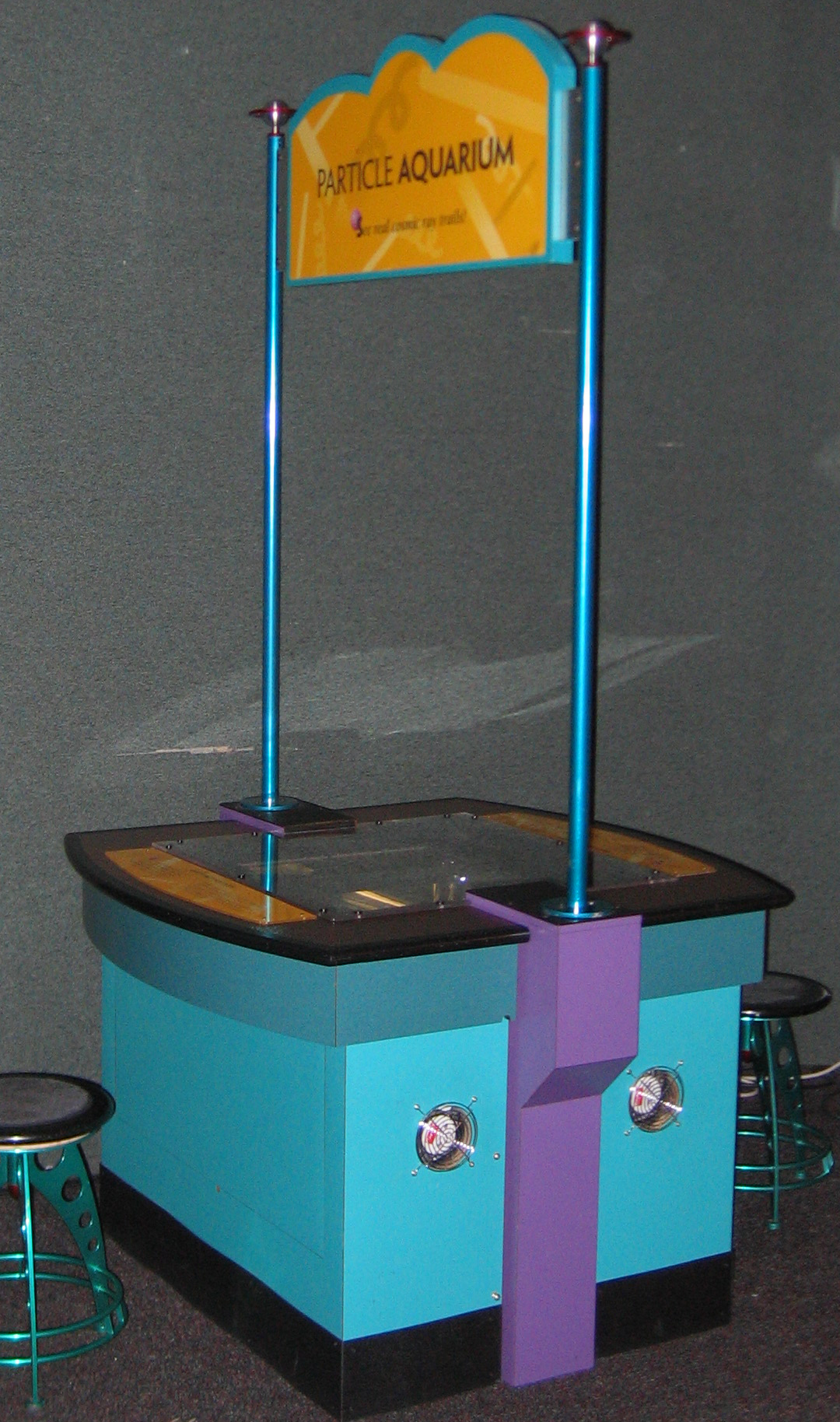 One of the small, unassuming—and much cooler than you might expect—exhibits at Pacific Science Center is the Particle Aquarium, also known as a cloud chamber or cosmic ray aquarium.
One of the small, unassuming—and much cooler than you might expect—exhibits at Pacific Science Center is the Particle Aquarium, also known as a cloud chamber or cosmic ray aquarium.
In Short
The particle aquarium creates a supersaturated environment of alcohol vapor. Charged particles (from space as cosmic rays or from radioactive decay closer at hand) pass through this supersaturated field. They leave behind a trail of ions, and those ions are nucleation sites, places where the alcohol vapor can condense into liquid droplets, which makes a trail of tiny droplets of alcohol. You see those trails, so you’re seeing the path of a cosmic ray from space.
As many cosmic rays as you see in the chamber, there are more than that there, and just that many are going through your body too at this very moment. You can also identify characteristics of the particle by examining the shape of the path.
How it Works
Look closely.
At the top is a place where alcohol is dripped into a small tray that runs around the edge. This is where the alcohol is heated until it evaporates, filling the entire chamber with alcohol vapor. At the bottom of the chamber is a chilled plate. As the vapor falls towards the plate it cools, creating a supersaturated layer of vapor near the bottom of the chamber. This layer is primed and ready to condense, it just needs a little push.
Any kind of push will create condensation in the supersaturated layer. As a charged particle passes through air it leaves a trail of ions in its wake. This is not to say ions are falling off the charged particle—no, it is interacting with the molecules in the air, turning them into ions.
Those ions cause the supersaturated alcohol vapor to condense, which shows the trail of the charged particle. The droplets fall to the cooled plate, and the track disappears.
Charged Particles and Ions
Remember back in chemistry when you learned that an atom has protons and neutrons in the nucleus, and is surrounded by a cloud of electrons? You also learned the protons (positive charge) and electrons (negative charge) tend to be in balance with each other, giving you a neutral atom. Depending on your teacher she might have called this a “happy atom.” Well, knock one of those electrons away—because it’s way more complicated to knock off a proton, we call that fission—and you create a positive ion, or what your teacher might have called an “unhappy atom.” You can do the opposite too—add an electron—and you have a negative ion.
Well, charged particles are, by their very definition, charged. Positive charges and negative charges attract, negative and negative repel, and positive and positive repel. So, if you get a charged particle near a neutral air molecule you could very well affect the outer electrons for that molecule. (And yes, I switched from using atoms to molecules – they work the same way in this case)
Cosmic Rays and Radioactive Decay
There are all kinds of cosmic rays in space (mostly from the Sun) and a good number of those make it down through our atmosphere to us. Not nearly all of them though, our atmosphere protects us. Here are three major types of rays:
- Alpha radiation is Helium nucleii (Heliums without electrons)—they have a positive charge, and are fairly heavy as particles go.
- Beta radiation is either electrons or positrons. When they’re electrons they have a negative charge, when positrons they’ll have a positive charge. These are fairly lightweight.
- Gamma radiation is photons. They’re charge-less and very lightweight.
Watch for
- Thickness: heavier particles can make thicker lines
- Speed: faster particles travel straighter
- Deflection: a ray’s interaction with other particles, electrons, etc will cause deflection
- Simultaneous events: probably from the same source
- Cascade events: one ray/particle interacts with something, causing several rays/particles to be released making their own tracks.
- Wandering: often caused by a low-energy ray making many interactions
- Curvature: in the presence of a magnetic field, positively charged particles will curve one direction and negatively charged particles will curve the opposite way.
Experiments to Think About
Both of these mean acquiring items which are generally not that safe to carry around unprotected, and sometimes require special licenses to have in your possession.
- Introduce a strong magnetic field. The path of a charged particle changes in the presence of a magnetic field.
- Introduce a radioactive source. Radioactive sources create charged particles.
Vocabulary
Supersaturated—when mixing sugar in your tea, you can only dissolve so much. If you heat up your tea you can dissolve more. If you then let your tea cool off, under ideal conditions, the sugar stays dissolved, even though you couldn’t have dissolved that much sugar in cold tea. This is a supersaturated solution – it’s more saturated than you could make it normally. This is why you should either add sugar to your iced tea before you cool it – or you have to add sugar syrup.
Nucleation site—if you then drop a sugar crystal or some such into the cold, supersaturated tea a the sugar will start to come out of solution and grow more sugar crystals on that first one. The first crystal (which can sometimes just be a rough spot, a spoon, a string, or a piece of sand) is the nucleation site. It acts as a nucleus for the new crystals.
Ion—an atom with too many or too few electrons.
Reservations
I need to do more research, there are two major problems with this article. First – I use the words particle and ray almost interchangeably, I should sort that out. Second – I would like to clarify how to identify types of radiation, and the likelihood the rays you’re seeing are from space versus from radioactive elements in the Earth. I’ll keep working on it, but this should definitely get you started on figuring out how awesome the particle aquarium is. Oh, and I want to stick in some pictures.
Want More?
Andy Foland’s Cloud Chamber
Cloud Chambers
More Cloud Chambers
A Great Lesson Plan (College Level)
A Place to Practice Identifing Tracks
![]()
~ A l i c e !


